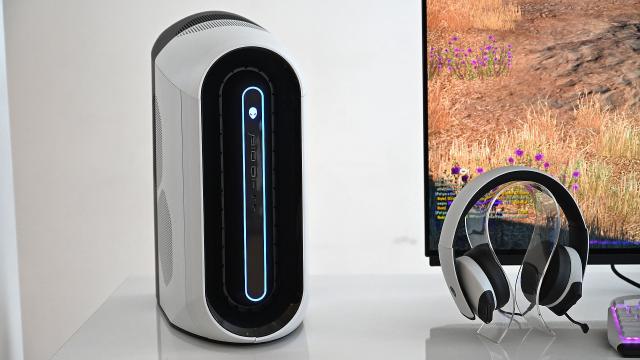Buying a new graphics card is already hard enough, but for folks living in a handful of U.S. states, ordering pre-built systems from some PC makers just got a lot more difficult due to newly implemented energy regulations.
While the energy regulations in question were actually passed way back in 2016, with some recent amendments set to phase in over the next few months, some PC vendors have begun restricting shipments of certain high-end desktop configs in order to comply with state regulations.
Just this week, a user on Reddit posted a thread containing a screenshot from Dell’s website saying that, due to power consumption regulations, Dell would not be able to ship an Aurora pre-built desktop PC to California, Colorado, Hawaii, Oregon, Vermont and Washington. Dell said that “any orders placed that are bound for those states will be cancelled.”
And while Dell may be the first vendor to implement new restrictions based on recent state guidelines, it seems more PC makers could follow, with additional regulations set to be implemented later this year and in 2022.
According to a statement from Dell provided to the Register, the only models currently affected by new regulations are Alienware’s Aurora R10 and Aurora R12 desktops, with Dell saying that the decision to ban shipments to certain states “was driven by the California Energy Commission (CEC) Tier 2 implementation that defined a mandatory energy efficiency standard for PCs — including desktops, AIOs and mobile gaming systems.”
While many of the regulations seem sensible and look to be largely inspired by similar standards issued by Energy Star (especially when it comes to excessive power draw for idle PCs), some of the CEC’s rules already seem somewhat out of touch in the context of today’s modern devices.
For example, according to Section 1605 of the CEC’s guidelines, one regulation stipulates that all computer monitors manufactured after July 1, 2019 ship with a “screen luminance less than or equal to 200 cd/m2 ± 35 per cent.” That’s about the same as 200 nits (or 270 nits when you account for the margin of error), which is significantly dimmer than what you get from most modern displays that typically output at least 300 nits of brightness or more, not to mention more beastly displays like Samsung’s newly announced Neo G9, which has a typical brightness of 420 nits and a peak brightness of 2,000 nits.
And while the CEC’s rules regarding monitors do include a provision that says a “a manufacturer may ship with additional features enabled, even if they were turned off in testing,” it remains unclear if the higher brightness you get from today’s monitors is allowed or not.
When it comes to pre-built desktop PCs, while the CEC does allow for higher power draw for systems with discrete graphics and other power-hungry components — systems made after July 1, 2021 are restricted to a max power draw of 75 kWh/yr with some wiggle room based on the specific config — it seems a number of high-end systems from other manufacturers may soon have to contend with energy regulations, too.
Electronics like game consoles (PS5, Xbox Series S/X, etc.) and DIY desktop PCs are not subject to these regulations, so there are some remaining avenues when it comes to buying high-end PC parts. However, with the limited supply of standalone graphics cards due to the ongoing chip crunch, many PC gamers have started turning to pre-built systems as a way to more easily obtain Nvidia’s and AMD’s newest GPUs.
While it remains to be seen if and when other desktop makers will begin instituting shipping restrictions similar to Dell’s, multiple states are facing rising power demand in order to combat record temperatures across the country. Trying to balance new tech with responsible power usage is only going to become an increasingly important topic.
Gizmodo has reached out to Dell for more info and a statement on the matter, and we will update the story if we hear back.
